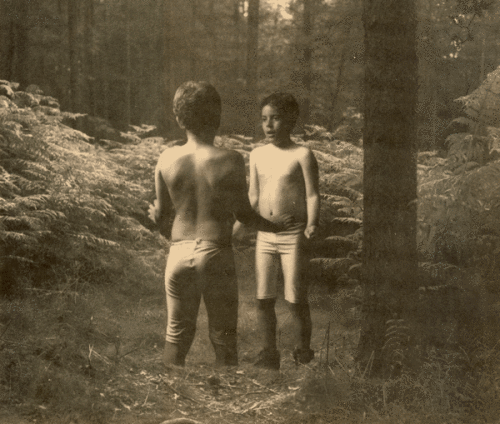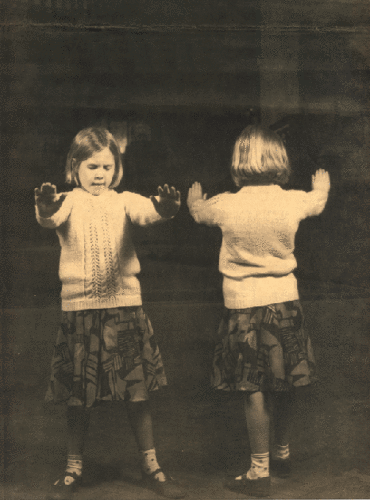Magical Mystories: Wendy McMurdo at the Site Gallery
A series of recent, digitally created images by Wendy McMurdo marks the launch of the Site Gallery in Sheffield. (The Gallery formerly known as Untitled.)
As one walks around the space, the traditional wall based images appear to be a series of black and white photographs (bar one). They engender a sense of being some sort of documentary evidence - of 'unusual' incidents; gestures or interactions that have been graduated by their presentation in a white cube gallery space. This is not to say that the subjects, which predominantly include children, are fleeting glimpses or arbitrary occurrences. In fact, quite the opposite is true, both in terms of their production and their rigorous (almost theatrical) composition. It rapidly becomes clear that the 'photos' are not records of past moments but instead are constructed with a pixel palette.

Broadly speaking, there are two formal strands to the work. They propose similar meanings but with different emphases. In the first, McMurdo presents us with scenes where the subject interacts with him/herself, either on a one to one basis (as in 'Matthew Philips, Merlin theatre'), or as part of a group ('Lesley Victoria Morris 14.11.94'). It is the sense of authenticity (`fastness') at once defeated by narrative impossibility, that creates the overwhelming paradox from which an audience's interpretations and reinterpretations can emerge. McMurdo subverts the notion of photograph as documentation - of any incident - by making the viewer interpret a more abstract image content, one that is metaphorical or myth like.

A slightly different emphasis is explored in McMurdo's other strand of work, described in the catalogue as "children in the landscape." Here we see awkwardly posed children who have been photographed in a controlled environment and then integrated into landscapes that have a typically traditional quality. The integrations are seamless, yet the studio-lit bodies of the children are at odds with the surrounding light and dark. In 'Ross Needham, Derbyshire 11.4.95', the boy stands by a forest path like some sort of oblivious time traveller. Oblivious that is to his surroundings, not to the gaze of the camera which, by association, becomes a kind of temporal junction that leads to viewer, photographer, boy and landscape.
The real strength of this exhibition lies in McMurdo's ability to create work that is neither dry conceptualism nor the expression of an impenetrable personal language. Almost every image manages to focus different aspects of the ongoing debate surrounding art production as we crawl toward the Millennium.
Mute Books Orders
For Mute Books distribution contact Anagram Books
contact@anagrambooks.com
For online purchases visit anagrambooks.com






